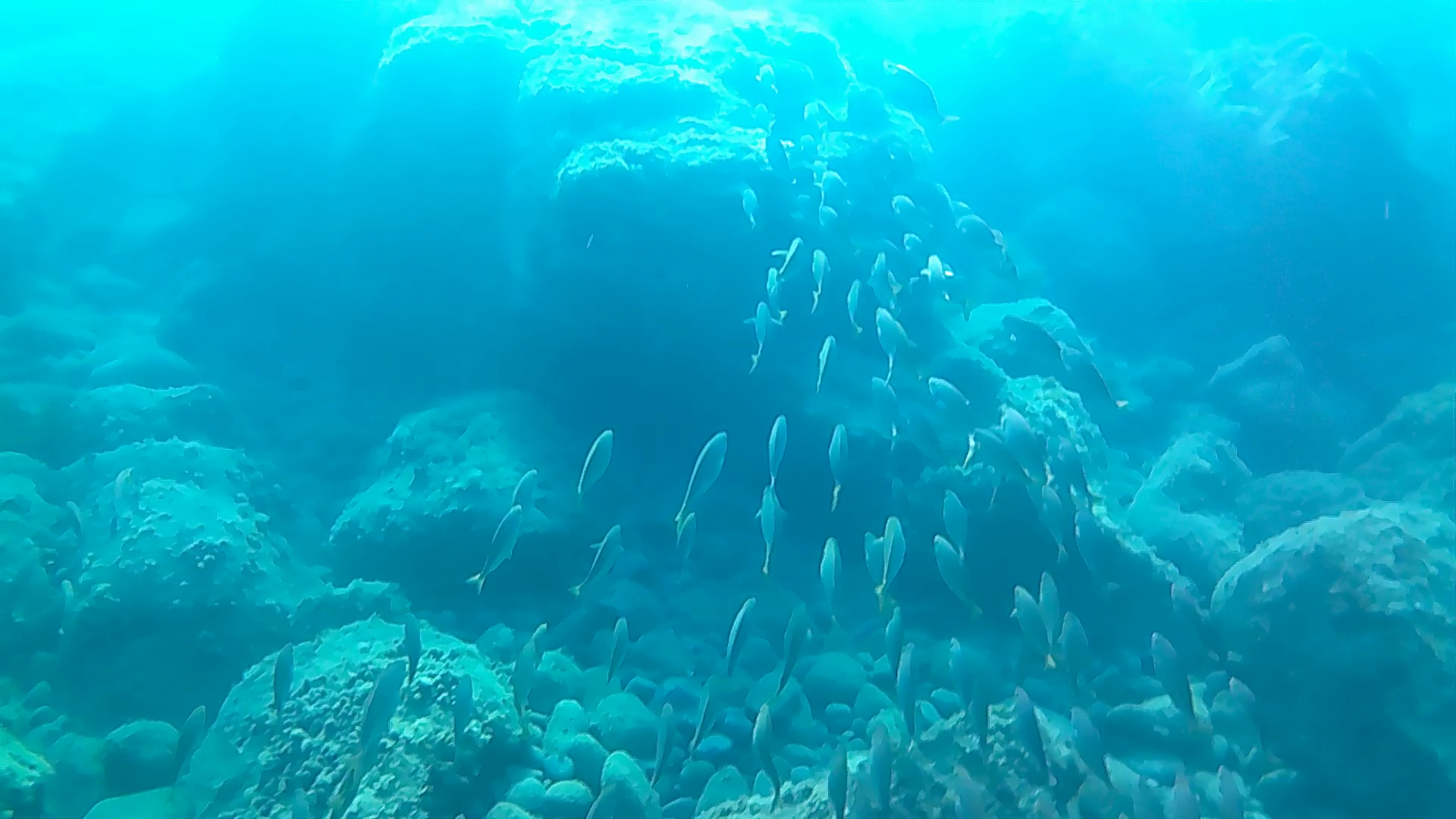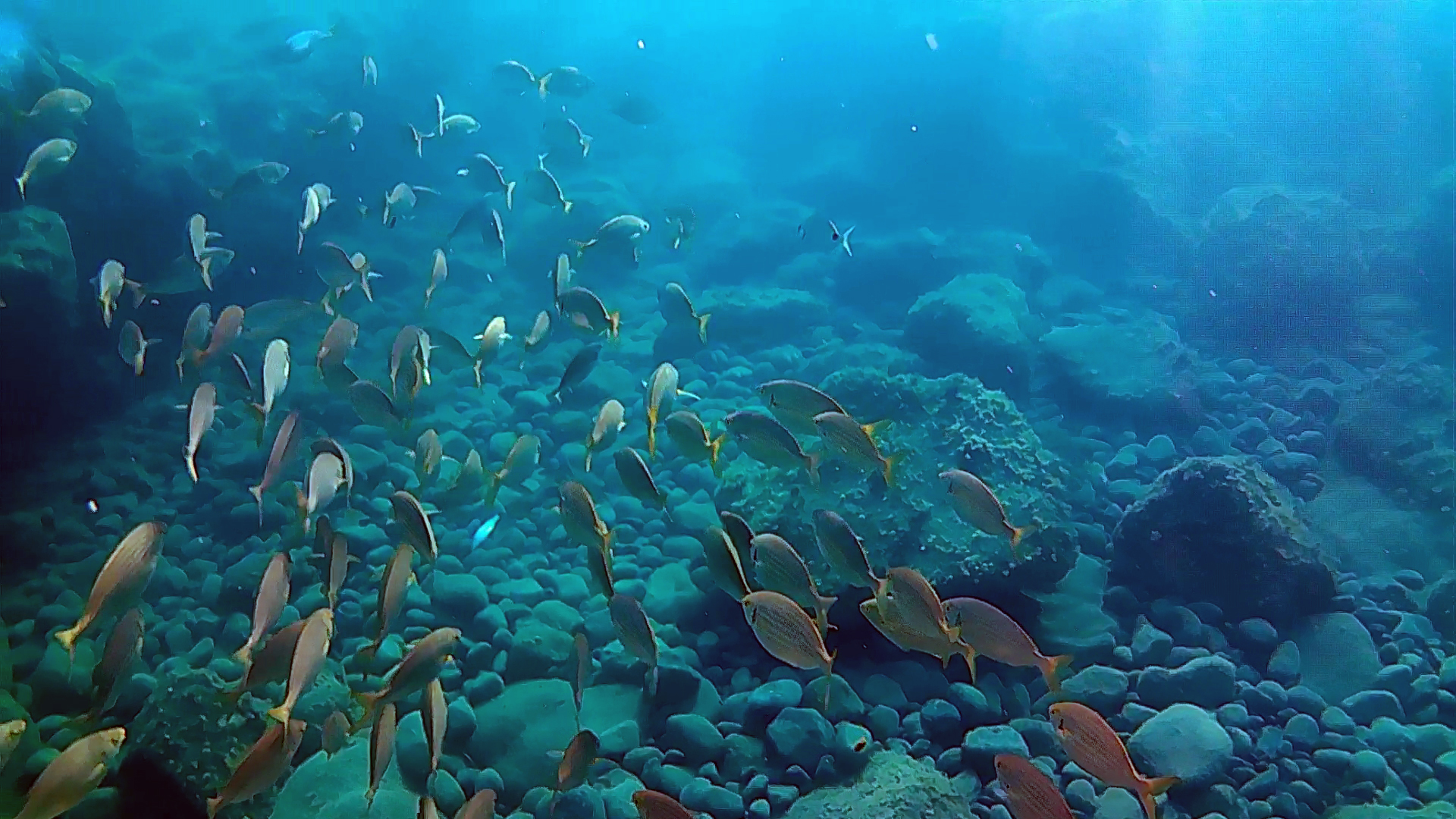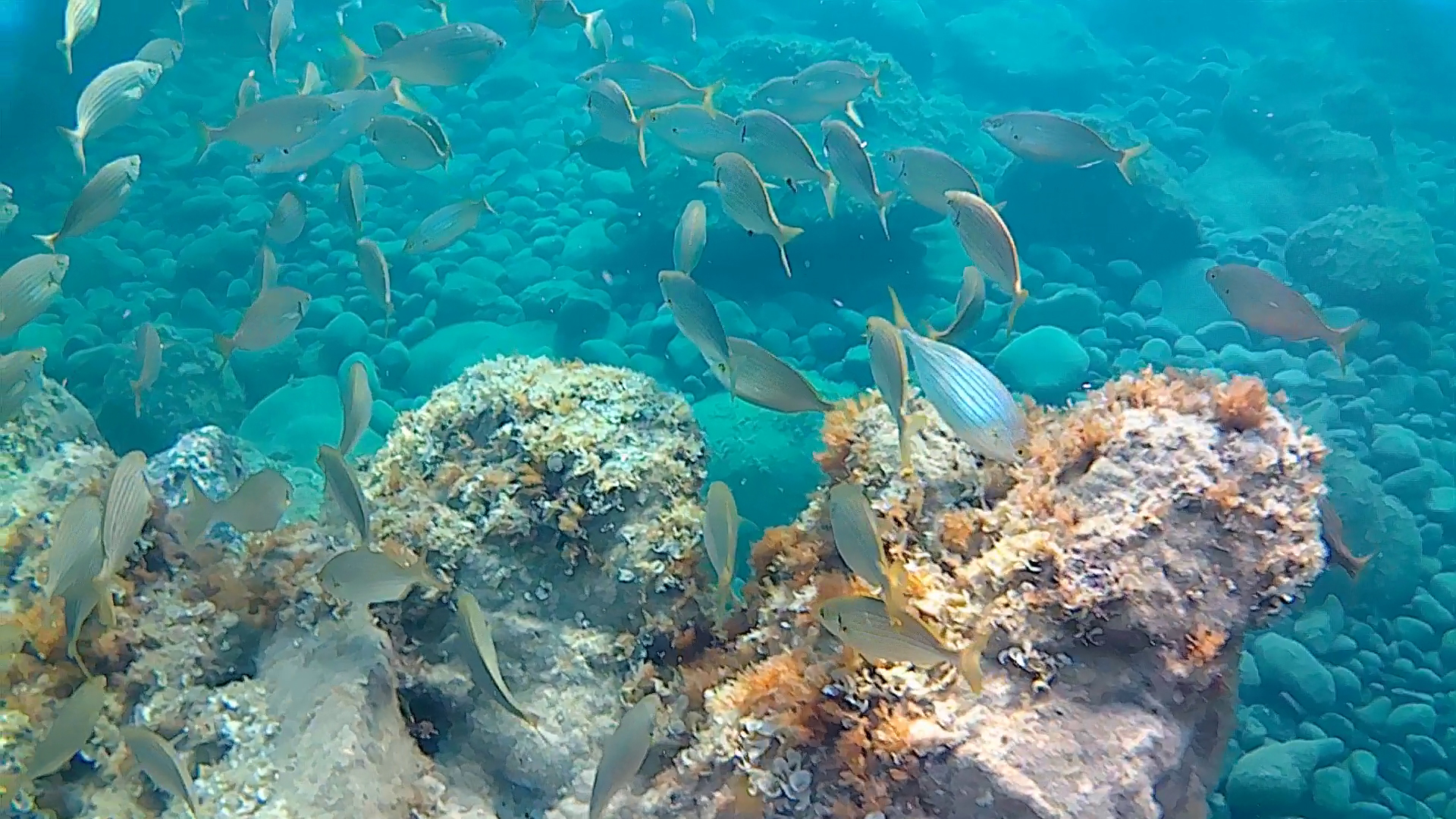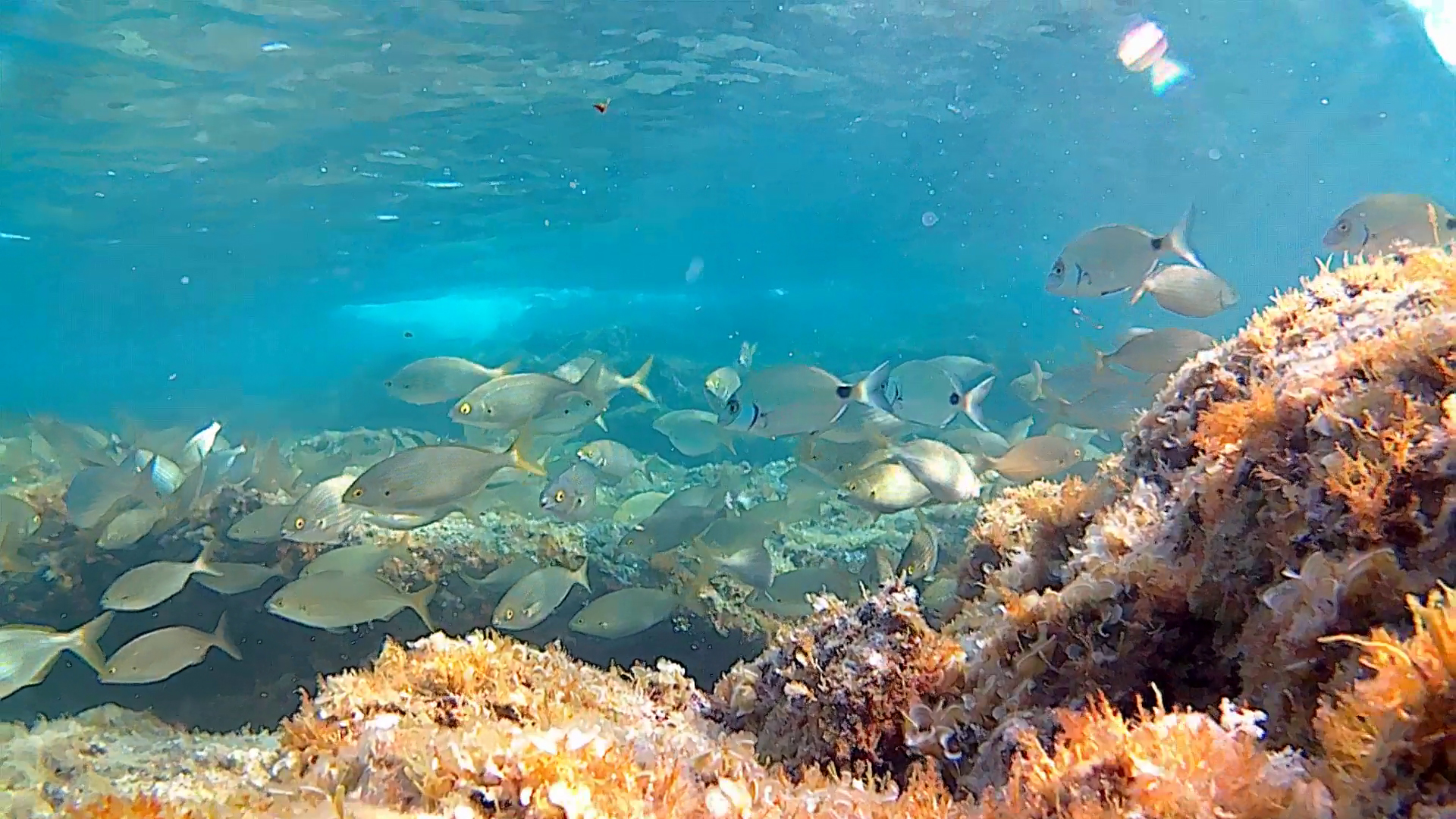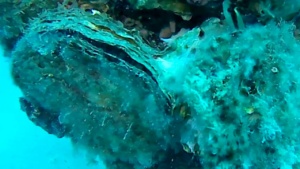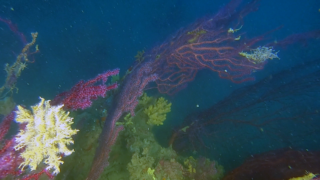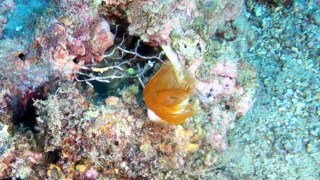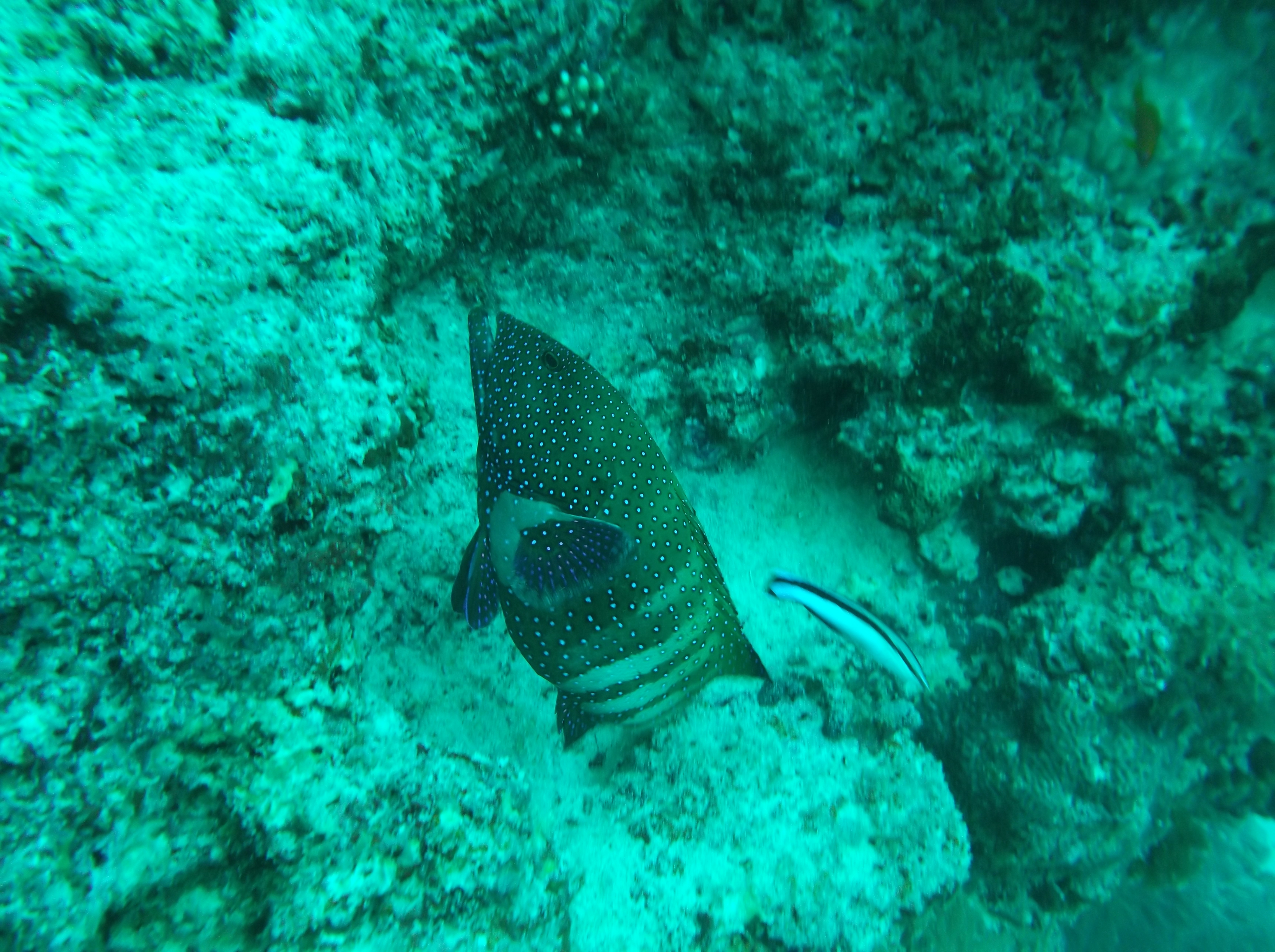We have already talked about the Sparids, especially Sargus (Diplodus Sargus) and Sarpa salpa, in this movie you can see how they share the same environment and sometimes the same food, seaweed for Sarpa Salpa and occasionally even Sargus. Simply doing snorkeling with mask and snorkel is easy to approach them while they are busy eating and without making sharp movements you can get to a few inches from them. Snorkeling – Salpe e Saraghi – IntotheBlue.it
The Sparidae are a family of fish in the order Periformes, commonly called sea breams and porgies. The sheepshead, scup and red seabream are species in this family. Most sparids are deep-bodied compressed fish with a small mouth separated by a broad space from the eye, a single dorsal fin with strong spines and soft rays, a short anal fin, long pointed pectoral fins and rather large firmly attached scales. They are found in shallow temperate and tropical waters and are bottom-dwelling carnivores.
There are hermaphrodites in the Sparidae. Protogyny and protandry appear sporadically through this lineage of fish. Simultaneous hermaphrodites and bi-directional hermaphrodites do not appear as much since Sparidae are found in shallower waters. Species of fish that express a hermaphroditic condition usually “lack a genetic hardwire”, therefore ecological factors play a role in sex determination.
Most species possess grinding, molar-like teeth. Some of the species, such as Polysteganus undulosus, have been subject to everfishing, or exploitation beyond sustainable recovery. Snorkeling – Salpe e Saraghi – IntotheBlue.it
(extract from Wikipedia)
 English
English Italiano
Italiano
